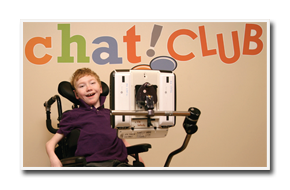June 26, 2013
“I’m bored,” piped a voice in the fifth grade science class. The teacher stopped for a moment, realized who made the comment, then continued her discussion.
“I’m bored,” was heard again. This time, the other children in the class started to twitter and giggle.
“I’m bored,” was heard once more. Louder giggles came from the students and the teacher knew she could no longer ignore the situation.
“I am sure others in the class feel just like you Graham, but we DO need to finish this lesson.”
The hallway buzzed with what Graham had said. He was so funny, so cool.
In most cases a parent/child discussion would be in order, but Barb and Greg Tresness did not have the typical reaction. They were thrilled.

This is not surprising. Life with Graham had been everything but typical. They had learned by experience to embrace the unconventional. To listen with their heart instead of their ears.
Graham was born thirteen years ago. It took months and a trip to New York City for Graham to be diagnosed with cerebral palsy. The Tresnesses were told this was not a disease. They were told there was no cure, no treatment. They were given a list of what might not be possible.
The diagnosis provided one answer, but also many questions. Why didn’t Graham sleep? Why did he cry? Why couldn’t he laugh? And…could he communicate?
Barb and Greg began an odyssey of doctor appointments, therapies, seminars, and treatments. All conventional. They wondered, was there something else?
They discovered craniosacral therapy (CST) and the Upledger Institute. CST is a gentle, hands-on method of evaluating and enhancing the functioning of the craniosacral system – which is comprised of the membranes and cerebrospinal fluid that surround and protect the brain and spinal cord. Using a soft touch, no greater than the weight of a nickel, practitioners release restrictions in the craniosacral system allowing the entire body to relax and self-correct.
Barb witnessed Graham laughing for the first time during a CST session. Finally he was sharing his joy, at two and a half years old. They questioned what more can we do?
Their next step was dolphin assisted therapy. This therapy shifts from homocentric models of health towards interspecies relationships. The dolphins augment CST by targeting areas within the participant that need release. This encourages healing.
Graham’s first session with the dolphins did not seem to be going as planned. He cried and cried. Barb’s first thought was, “This isn’t working!” But she waited, and listened. Graham’s cry was his way of telling the dolphins his story. The therapy session allowed him to do so. Barb’s mission became finding a way Graham could tell that story to his family and peers.
When Graham was ten Barb attended a presentation of the Tobii Communication Device. This device uses eye gaze technology to assist communication. Without saying words, Graham would have the ability to speak. Barb had found Graham’s voice.
Barb and Greg worked for more than a decade to find a way for Graham to communicate.
They wanted to share the knowledge they’ve cultivated and resources they’ve gained to benefit others. One day, when telling Graham’s story to a friend, it was suggested they talk to Peter Blanck, Chairman of the Burton Blatt Institute (BBI) Leadership Team. Barb and Greg recognized BBI could tell the story globally and Peter realized this potential program was a perfect fit for BBI. A partnership was created with a contribution of $100,000 by the Tresness family. Barb then converted her vision into the new program for children who are non-verbal, Communication Hope through Assistive Technology (CHAT). With the global reach of BBI, CHAT will share the imagination, ability, creativity, and yes…sense of humor of people who use Augmentative and Alternative Communication (AAC) with the world.